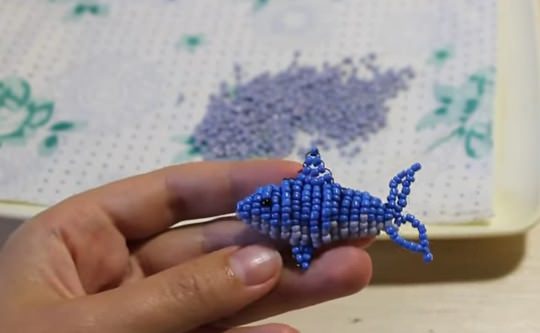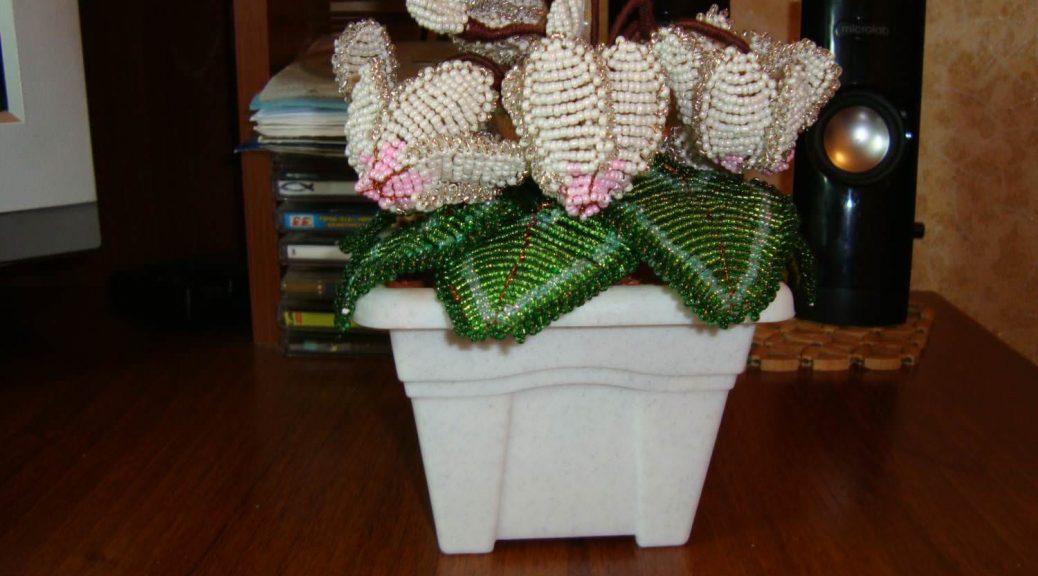
Cyclamen from beads: weaving a delicate flower with our own hands
Content
Beautiful, gentle, mysterious - cyclamen made of beadsDiffers with tenderness and mysteriousness. This fabulous flower is quite easy to make by yourself. We offer a detailed master class of such beading.
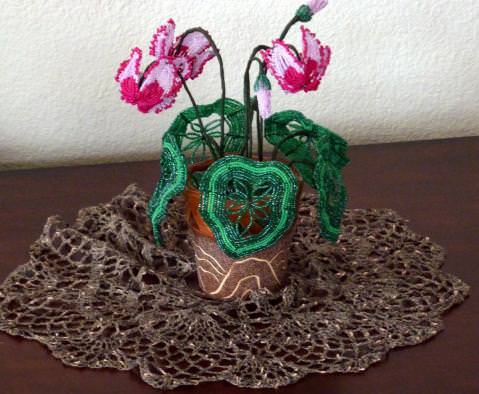
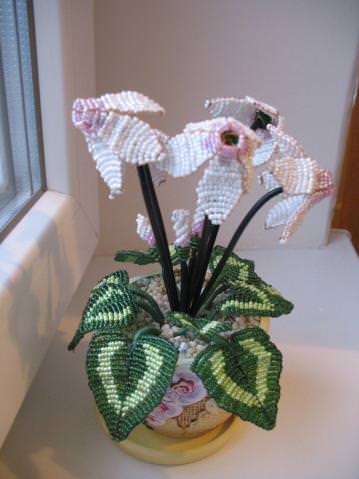
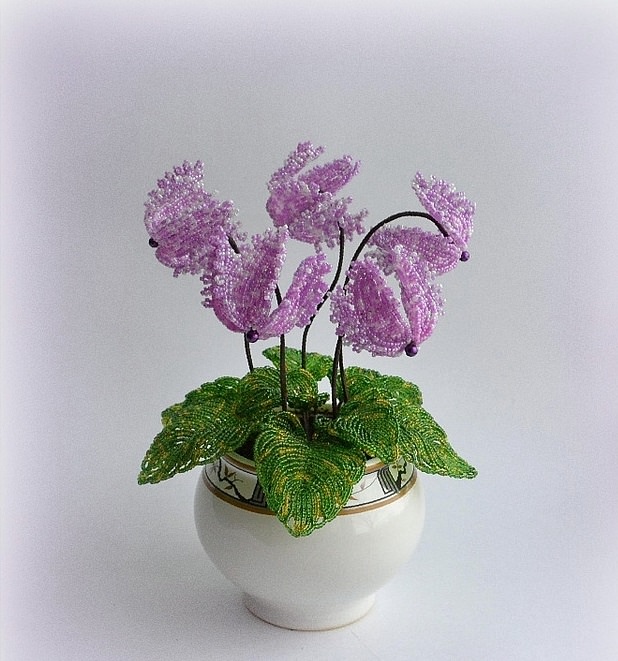

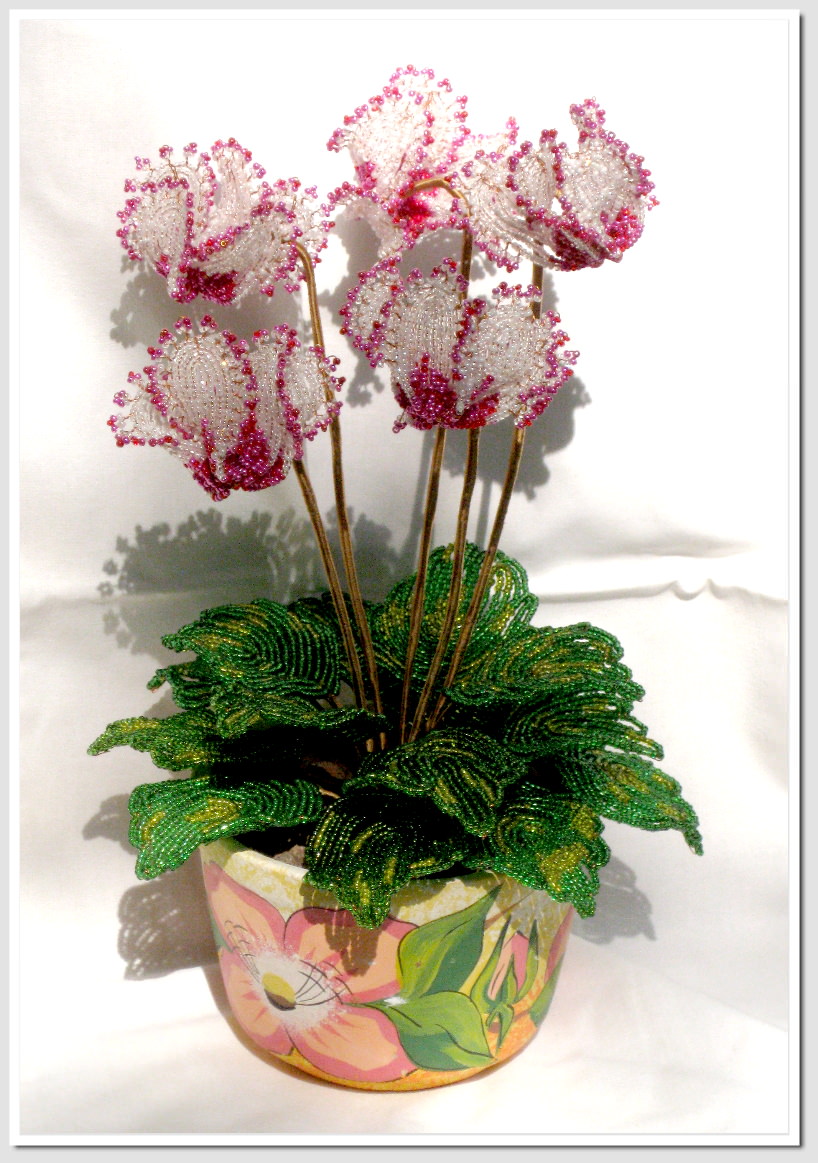
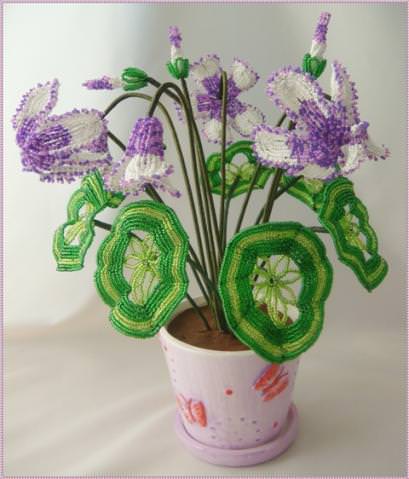
Master class of weaving a cyclamen from beads
For
:
- white;
- silver;
- pink;
- Light green;
- Dark green;
- wire;
- Small flower pot;
- Brown thread;
- Green thread;
- gypsum;
- Brown paint.
Manufacturing process:
To weave a beautiful cyclamen from beads you need to study the master class of its manufacture in detail. Below are detailed instructions for weaving each element of the product.
Flower First we will make flower petals. This beadwork is quite simple. This is a great practice for beginners. To do this, cut off 50 centimeters of wire. We put on it one pink bead. We advance it to the center of the metal thread and fix it. Below is a detailed scheme of weaving a petal in the technique of parallel weaving.
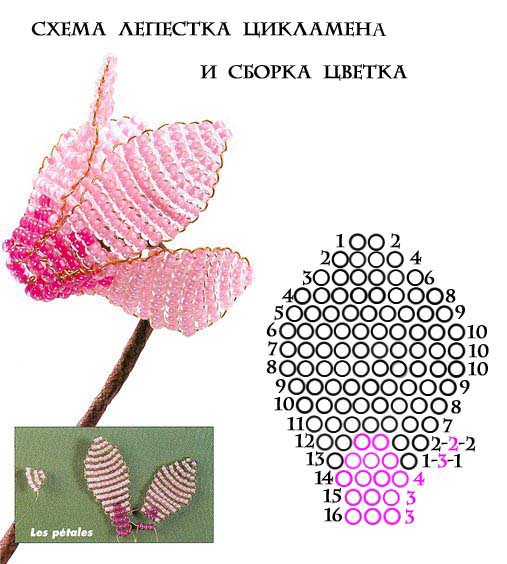
We type three such beads on one end. The second thrust in them, but in the opposite direction. We tighten;- The second row also fixes the three pink elements;
- The third row - four like;
- The fourth is one white beads, three pink and one again white. Each row must always be fixed with the second end of the thread;
- The fifth row - two white, two pink and again two white;
- The sixth - seven white beads;
- The seventh - eight of the same;
- The eighth - nine like;
- The ninth, tenth and eleventh weaving periods have the same number of white beads - ten pieces;
- The twelfth - nine elements;
- The thirteenth is eight;
- Fourteenth - six;
- The fifteenth is four;
- Sixteenth - two.
Each row should be tightened tightly and lying strictly parallel to the previous layer. On the video you can see how to correctly make a petal of beads in the technique of parallel weaving. The petal is ready.
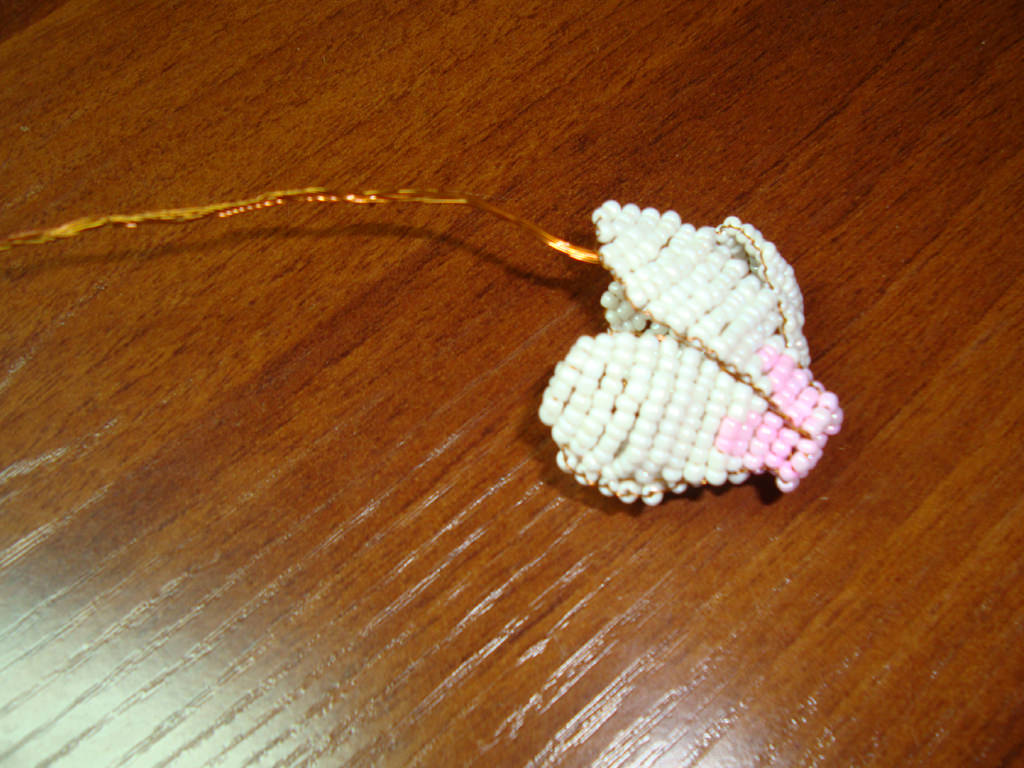
After that, it should be cut along the edgeSilver beads. To do this, on a separate piece of wire you need to put on five beads in sequence: one white, three silver, one white. We attach one end of the metal thread to the first bead of the lower row of the petal, we slip the beads and pass the second end of the wire into the first element of the second row.
Repeat this beadwork until the whole petal is lace. Such blanks should be made for one flower five pieces.

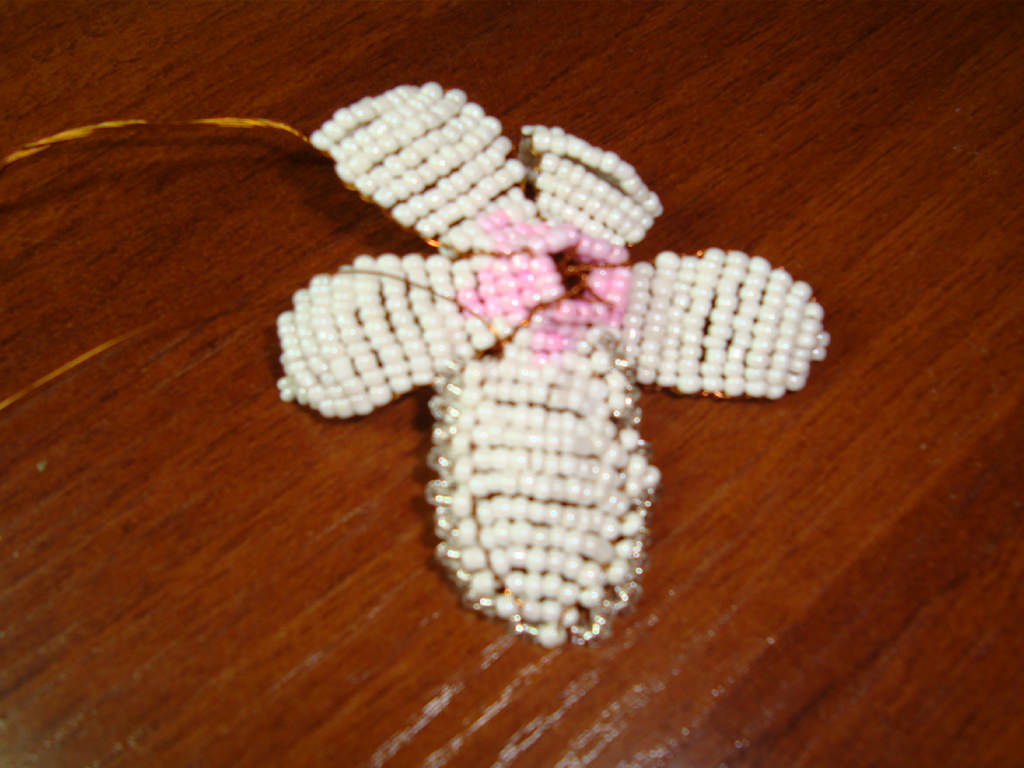
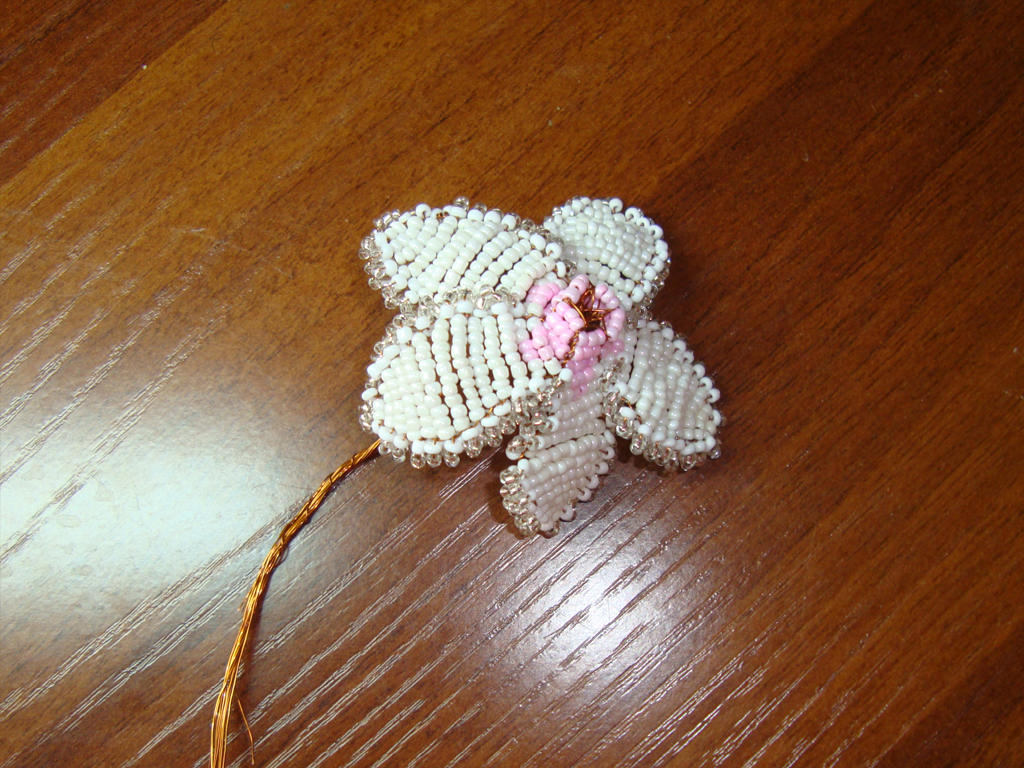
After that, we collect all the petals together. Each blank should have a long end of a metal thread. We twist them into one stem, into the center we insert a thick wire. It should be firmly wrapped in a brown thread. The flower of beads is ready. For one composition, you need to make six such flowers.

Bud Next, let's make another unopenedflower. To do this, cut the wire length of thirty centimeters. On it we string thirty white beads. We stretch them to the center of the thread and pass one end through fifteen elements in the opposite direction. It turned out a ring. We tighten the thread.
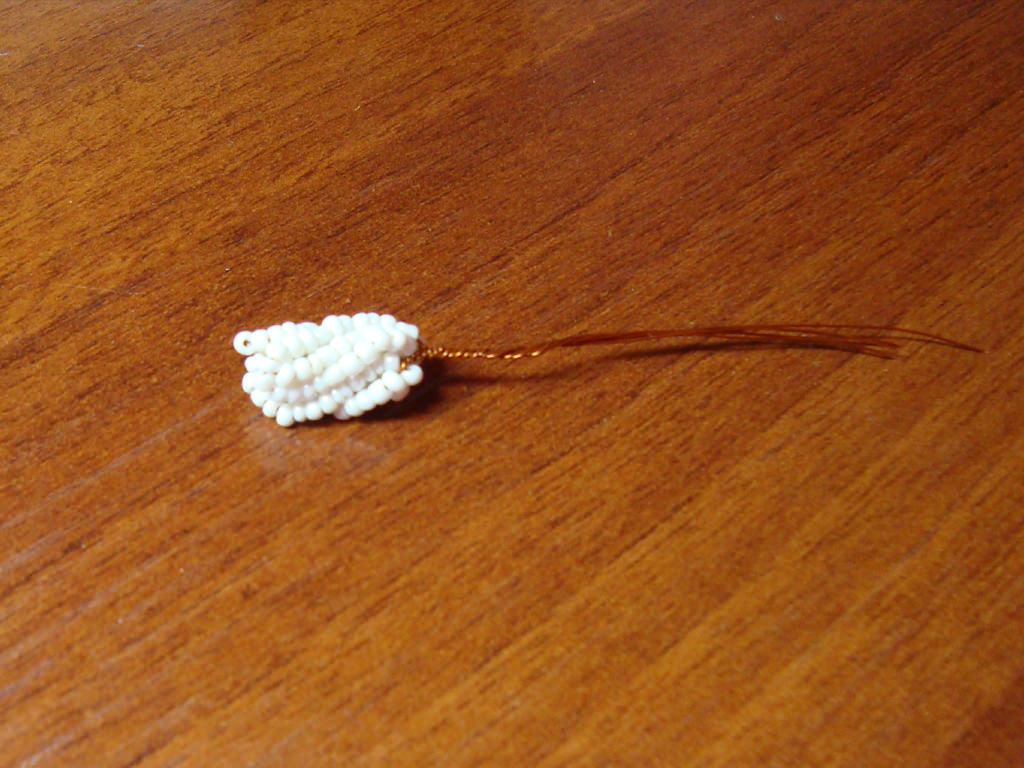
Next, the working part of the wire must be wornTen beads of white color. We thrust them into the previously formed ring, fix the thread under the workpiece. This turned out petal bud of cyclamen. Such preparations for one bud should be made three pieces. We twist them together in a spiral. In the center of the bundle of filaments, you need to insert a thick wire. Everything is well strengthened and wrapped in a brown thread.

Leaves This beadwork is done on the sameMethod, as the petals. That is, each row is fixed by passing the second end of the wire in the opposite direction. For this product we will use dark green and light green beads.
The leaves will be weaved according to this pattern:
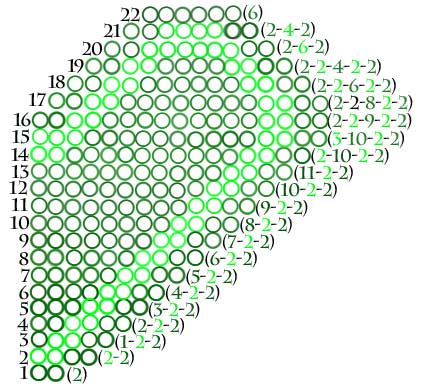
The first row of weaving is two dark green beads;- The second - a pair of light green, two dark green;
- The third - one dark, two light-colored, a couple of dark ones;
- The fourth - two dark, as much light, a couple of dark;
- The fifth - three dark, two light, the same number of elements of the previous color;
- The sixth - four dark, a pair of light, two dark green;
- The seventh - five dark green, two light and again two dark ones;
- The eighth - six dark, two light and the same dark;
- The ninth - seven dark green, two light-colored, a pair dark;
- The tenth - eight dark, two light green, the same number of dark;
- The eleventh - nine dark green, two light, a pair of bsin of the previous shade;
- The twelfth - ten dark, a pair of light, two beads of the previous color;
- The thirteenth - eleven dark, two light, the same dark;
- The fourteenth - a couple of light green, ten dark green, two light, the same amount of dark;
- The fifteenth - three light, ten dark green, a pair of light, two dark;
- The sixteenth - two dark, a pair of light-colored, nine dark, two light, the same dark green;
- The seventeenth is two dark, a pair of light green, eight dark green, two light-colored, a pair of dark;
- Eighteenth - two dark, a pair of light, six pieces of the previous shade, two light, the same dark;
- Nineteenth - two dark green, a pair of light-colored, four dark, two light, the same number of dark ones;
- The twentieth - two dark, six light green, two dark;
- The twenty-first - a pair of dark, four light, two beads of the previous color;
- Twenty - second row - six dark green elements.
This scheme is only half a cyclamen leaf. Next you need to weave the second part of it.

For this we cut off a piece of wire, we pass itIn the first bead of the lower row of the petal in such a way that it is in the center of a new metal thread. The photo shows the process of weaving the second half of the leaf. This part of the leaf is plaid by the same method. Each new row is weaved to the first part by poking the free end of the wire into the bead of the corresponding row.
When the two parts are completely woven together, the rest of the wire should be twisted together, wrapped in a green thread. The edges of the leaf must be covered with dark green beads. There are eight such pieces to make.

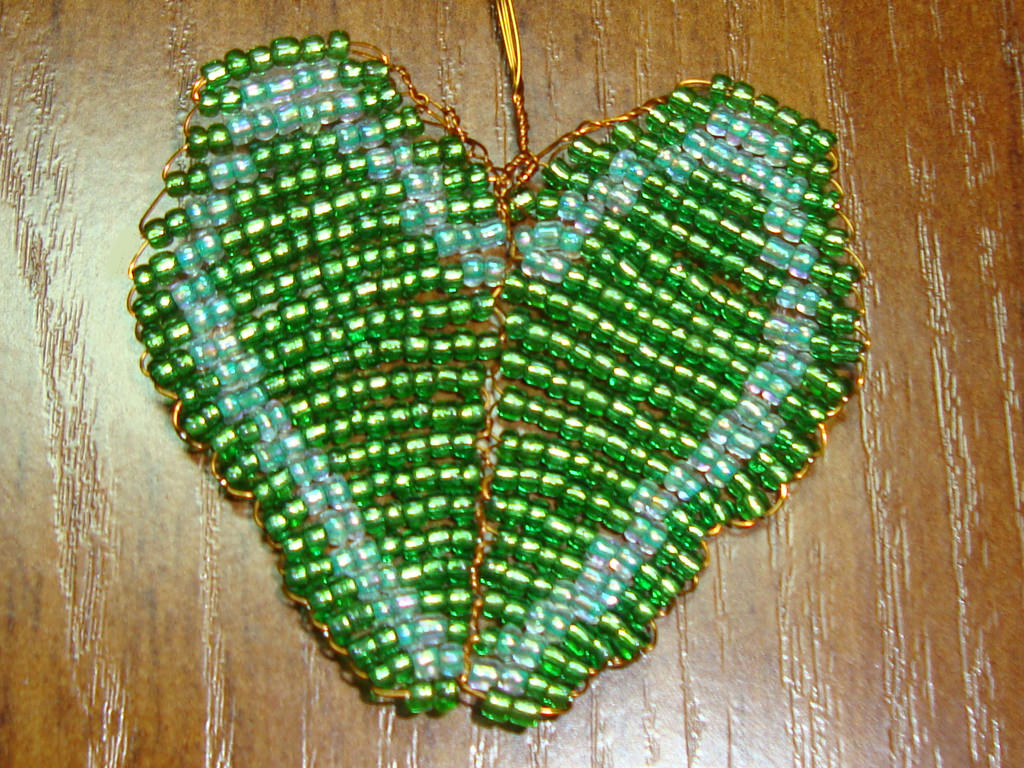
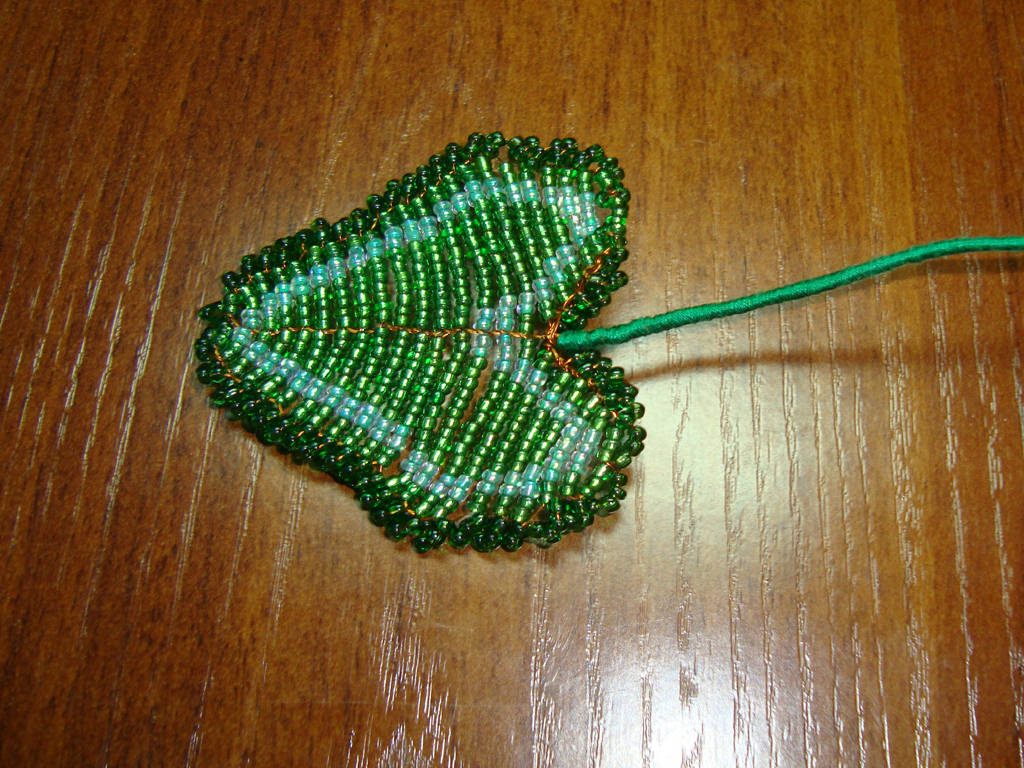
Assembly First you need to collect the flowers in a bouquet. Secure them together with a thread or wire. To them, add leaves and evenly arrange them. Also fasten.
After this, plaster should be diluted with water up toCreamy condition. Pour it into a flower pot. In the center it is necessary to arrange the flowers, fix it until the mixture has completely solidified. Hard gypsum should be painted with brown paint. The master class on bead cycle of cyclamen is over!
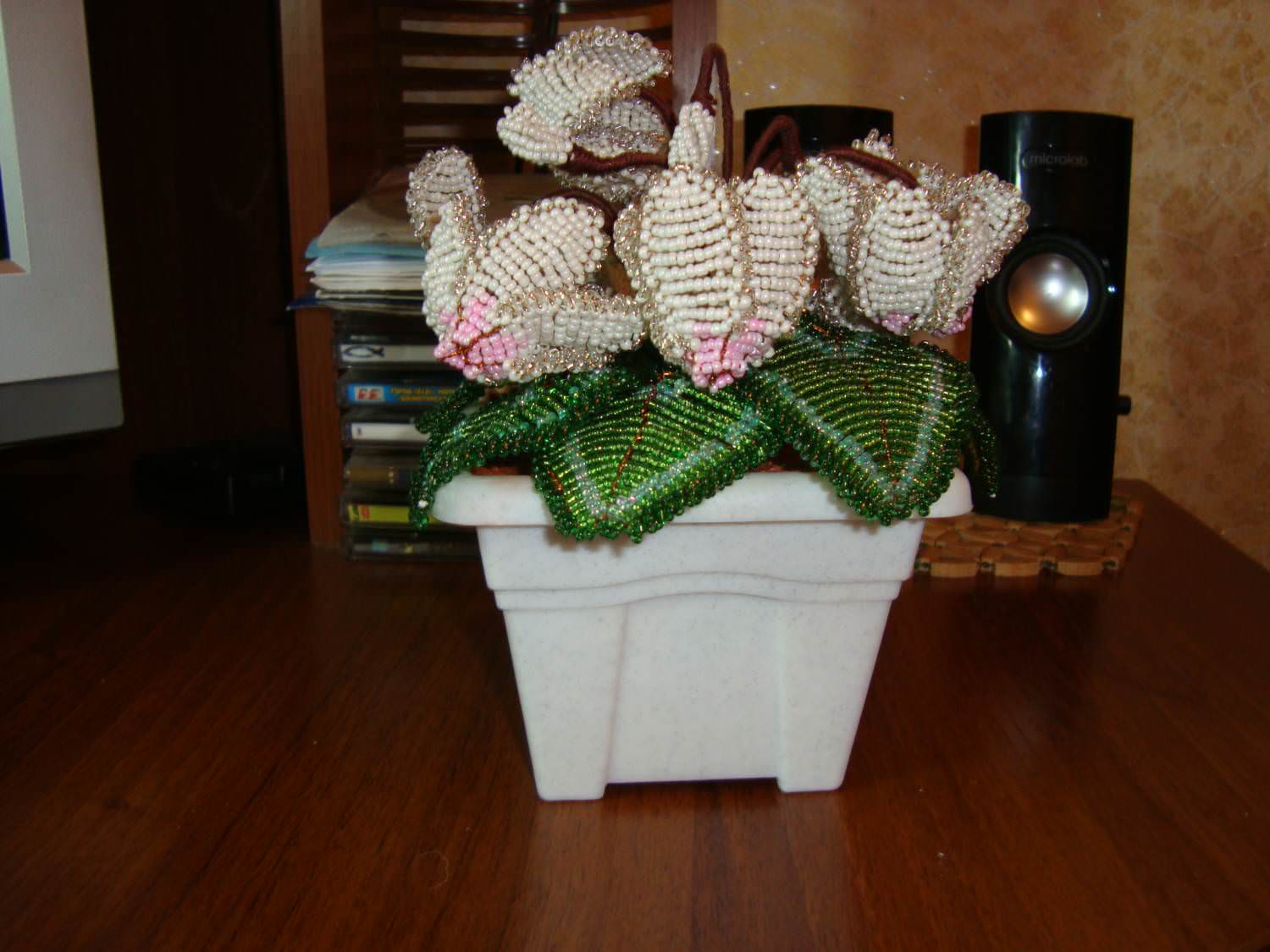
Cyclamen made from beads, made by own hands, are very beautiful and unique. They will become an amazing decoration of your room. Will bring in any interior of fabulous and spring mood.

